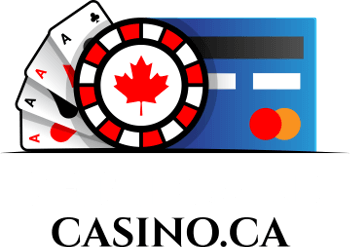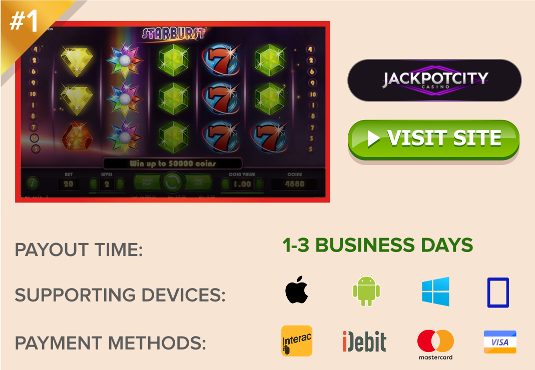How to Play Backgammon Online for Real Money
 Backgammon is a classic two-player game that falls into a small group of inherently skill-based board games; similar to that of chess and checkers. The presence of dice infuses an element of chance, but the more experienced, strategically-minded player will have a distinct advantage. This is one reason so many enthusiasts choose to play backgammon for money.
Backgammon is a classic two-player game that falls into a small group of inherently skill-based board games; similar to that of chess and checkers. The presence of dice infuses an element of chance, but the more experienced, strategically-minded player will have a distinct advantage. This is one reason so many enthusiasts choose to play backgammon for money.
How to Play Backgammon Online for Real Money
-
How to Play: Backgammon is a game for two people. Each player starts with 15 pieces called checkers. The first to bear off all of their checkers wins.
-
Proven Strategies: Backgammon is a game of in-depth offense and defense. Keep your blots covered, your eyes peeled for opportunities, avoid necessary risks, and practice, practice, practice!
-
Betting in Backgammon: There is a standard set of betting rules for backgammon. Players stake money, and win or lose bets based on point values and optional doubling.
-
Playing Online: There are numerous websites that promote real money backgammon. For your personal safety, we advise you adhere to these strict site selection rules…
|
Disclaimer – Not all forms of gambling are legal in all provinces of Canada. The legal age to gamble also varies by province. Breaking the law is a serious matter. The information provided on this website is meant for educational purposes only, and we will not be held liable for any irresponsible / illegal activity on your part. Know the gambling laws in your province and follow them. The following pages provide more information on Canadian gambling laws:
|
1. Backgammon Rules – All You Need to Know |
||||||||||||||||||||||||||||||
|
Backgammon is a game for two players, competing head to head. Traditionally, you would need one standard backgammon board, 30 checkers (15 white, 15 black) and two dice, plus a doubling cube, to play. If you intend to play online, all you’ll need is a computer or mobile device (smartphone or tablet) with a stable internet connection. Before I attempt to explain the rules of play, let’s take a moment to learn some important terms. Backgammon Glossary of Terms
Playing Backgammon – Step by StepThe object of the game is to bear off (remove) all your checkers from the board. The player who does this first wins. A game between beginners could last up to an hour, but for experienced players, it could be as short as 5 minutes. Thus backgammon is often played in matches, with each match being worth 1 point (more if doubled).
The game starts with the board set-up as shown in the diagram on the right. Note the placement of each light and dark colored checker. The dark checkers belong to one player, who will play in the direction shown by the black arrow on the diagram. The light checkers belong to the other player, who will move their checkers in the direction indicated by the white arrow. Set up and point-numbering are as follows:
The player’s goal is to move their checkers from the direction of the 24-Point to the 1-Point. Each player’s point numbers are opposite, meaning each player will move their checkers in the opposite direction (again, note the direction of the black and white arrows in the diagram above for reference). The Game Begins…Each player will roll one die. The highest number goes first. Then, each player takes alternating turns rolling both dice and performing actions based on the outcome of the dice. Rolling SinglesTo roll singles means to roll two dice of different numbers, such as 5-2. When this happens, the player may move one or two checkers, with each movement mimicking the number on one of the dice. For example, if 5-2 is rolled, they may move any one checker 5 spaces, and another checker 2 spaces. Or, they may move the same checker the total amount of spaces, so long as both moves are legal (5 then 2, or 2 then 5, without being blocked). Legal MovesA legal move is one in which the moving checker is able to land either on an open, unoccupied point, or a point that is already occupied by his own checker(s). Or, if the opponent occupies the point with a blot (only one checker), the player can land on it, hitting the opponent’s checker and sending it to the bar. Note that there is no limit to the number of checkers that can occupy a single point, so long as they all belong to the same player. Rolling DoublesIf a player rolls doubles, such as 3-3, they will use each dice two times. It would be as if they rolled four dice, and they all landed on 3. You can move any combination of checkers, up to 4, 3 spaces each, provided they are all legal moves. ImmobilityIf a player is unable to use all of their dice, they must forfeit use of the die they cannot use. For example, if 3-5 is rolled, and no checker can move 5 spaces, the 5 is forfeit. If the player can use either one, but doing so prevents use of the other, the higher die must be used. Likewise, if making one move grants mobility that would otherwise be impossible, that move must be made. For example, you’ve rolled 3-5. Moving the 5 prevents the 3 from being used, but moving the 3 first allows the 5 to be used. You are obligated to move the 3 first. When in doubt, remember that whichever move gets your checker(s) the furthest is the compulsory move. On the BarWhen a player has one or more checkers on the bar, they are not permitted to move any other checkers until all of their barred checkers have re-entered. If this player rolls and is unable to re-enter (i.e. opponent has a Prime or Full Prime of Anchors blocking the path), the player cannot move and must forfeit his turn. Bearing OffTo win the game, a player must bear off their checkers. Once all 15 checkers have been moved into the Home Board (the quadrant featuring Points 1 thru 6), the player can start bearing them off. Players are required to use the numbers rolled on the dice to bear off each checker, so long as a legal move is possible. However, if the number rolled is higher than any legal move, the farthest checker may bear off. For example, if the player rolls 6, and only has checkers on Points 2, 3 and 5, they may use the 6 to bear off the Point 5 checker. The Doubling CubeThe doubling cube plays a very important role in competitive backgammon games. This special die features six sides, numbered 2, 4, 8, 16, 32 and 64. If you’re crushing your opponent, you can use this cube to end the game, forcing your opponent to either forfeit, giving you the win, or double the current stakes (in single games) or point value (in match play). The cube is most often played when one player has a distinct advantage over their opponent. An opponent who knows he is defeated will surrender when his opponent raises the Doubling Cube. However, if this player thinks they still have a good enough chance to continue, they can accept the challenge and play on at double the stakes. At the start of a match, no one has control of the Doubling Cube. Either player can call Double at any time. Once a player calls Double, if their opponent accepts, they gain control of the cube. When in control of the cube, a player can request another Double at any time, wherein the same rules apply – forfeit the game or accept the double. BeaverSome groups / websites use the Beaver rule, wherein a player who is Doubled can respond with an instant Quadruple. This player is called a Beaver. If the opponent (who originally called Double) accepts the Quadruple, the Beaver gets to retain control of the Doubling Cube. Match PointsEach doubling of the game increases the stakes or points 2x beyond the current amount. If playing a single game, the stakes for winning double. If playing matches for points, number of points earned for the current match double. The stakes / points would increase 2x , then 4x, 8x, 16x, 32x, up to a maximum of 64x the initial value. Note that bets are generally paid by points won (see Backgammon Betting Structure below), so be careful – doubling can get expensive! |
How to Win Backgammon – Strategy and Tips |
|
The absolute most important thing you can do to improve your Backgammon game is to practice. Play it over, and over, and over again. I would suggest downloading a PvC Backgammon app that offers varying degrees of difficulty – Easy, Medium and Hard. Not only will you become more familiar with the game, you will inherently begin strategizing your game play as you begin to recognize offensive opportunities and defensive threats. As you advance beyond beginner status, I would suggest looking into a backgammon strategy known as Opening Theory. All the greats have a theory on the best opening moves (as Player 1), as well as the best replies to those moves (as Player 2). These are the only moves that can be strategically set forth from the start of the game, as there are far too many variables to consider thereafter – at least, not until they are actively occurring. I’m not going to bother delineating this theory, since it’s already been done – perhaps far better than I ever could. What I will say is this. If you click the link below, and find that it doesn’t make sense, you have not had nearly enough practice. Keep playing and revisit this link later. More Backgammon TipsThe following are some basic but very important tactics to consider when playing backgammon for money, online or otherwise. Double TroubleUnless you have a very distinct advantage, be very careful about doubling. If you’re only slightly ahead, odds are you will get Quadrupled back, and possibly threatened with an 8x after that if/when your opponent takes the lead. Think Twice About BlotsThe more blots you leave on the board, the more danger you’re in of being barred. If you have a choice in blotting, calculate the risk of your opponent being able to hit you. Never take an unnecessary risk when there’s a better (less risky) option. Hit When AbleWhen you have a chance to hit your opponent’s blot, 99% of the time, you should. Hitting blots and sending them to the bar can cripple a game beyond recovery. Especially if you’re able to… Block Re-EntrySetting up a fortified blockade in front of your opponent’s bar is one of the best backgammon strategies you can employ. Set up anchors and primes when you can. If you hit a blot, and they can’t re-enter, they have no choice but to pass each play until they can play again, giving you full control of the game. Tactile AvoidanceAs the old adage goes, the best offense is a good defense. Always think about your opponents next move before making your own. Make every conscious attempt to avoid falling victim to hits, traps and blocks. A mutually blocked standoff benefits no one. Duplicate BlottingA duplication strategy is one in which you only place blots that require your opponent to roll a specific number to hit them. For instance, you could have two blots on the board, but the only way your opponent can hit them is to roll a 3, thus minimizing the odds that you will be hit. Come from Behind – Backgame StrategyBackgame is a distinct strategy useful when your at a significant disadvantage. The idea is to position two or more anchors in your opponent’s home board, simultaneously constructing a prime in your own home board. The anchors obstruct movement for your opponent, while giving you opportunities to hit them as they near the finish. Don’t Get CockyOver-confidence is the fastest route to failure. If you’re ahead, don’t get cocky, and – as stated previously – don’t take unnecessary risks. A slow, calculated win is always worth the effort. Practice – Practice – Practice!The absolute best way to become a backgammon master is to play the game. Play it incessantly. The more practice you get, the more you will begin to understand and recognize the finer details of the game. You’ll notice a trap several plays before it’s set. You’ll see opportunities take shape. Over time, the game will become an extension of your thought waves, taking little effort to play or win. |
Backgammon Betting Structure – Staking & Doubling |
|
While most championships and leagues frown upon it, backgammon gambling is not uncommon. There are two standard ways to go about it. Single Game – Straight Up BettingThis one needs little explanation. Two players compete in a single game, for a predetermined amount of money. The winner takes all. This is the easiest way to bet, strongly recommended for players new to the betting scene. Doubling Cube: In this format use of the doubling cube will multiply the straight up stake. Single Game – Per Point BettingThis wagering format requires the players to agree on a stake per point. The points are determined by the number of checkers remaining when the game is over. The number the loser has left on the board is multiplied by the stake to determine the payout. For example, if the loser bears off 7 before the game is over, he has 8 checkers left on the board. At $1 per point, he would pay $8 to settle the bet. Doubling Cube: Use of the doubling cube in this format multiplies the stake. Match Betting – Progressive Point SystemMore commonly when playing backgammon for money, a match-based point system is used. A single game can be very quick – as few as five minutes among highly skilled players. To keep the game challenging, players will compete in matches, with the first to reach a certain number of points declared the winner. First to 10, 25, 50, or even 100. This may sound like a very long game, but for those who make diligent use of the doubling cube, it can be over rather quickly. It can also get pretty expensive, so be careful. The betting structure for this style is not complicated. The two players will agree to play to a certain score, and on a stake per point. If the winning score is 10, then the first player to 10 points wins. The opponent’s score is subtracted from the winner’s score, then multiplied by the stake to determine payout. For example, let’s say you’re staking $2 per point and playing to 25. You win by a score of 25 to 16. The loser would owe you 9x the stake, or $18. Doubling Cube: In match betting, the doubling cube multiplies the number of points earned for a single match. Backgammon Gambling TipsYour degree of confidence in your backgammon skills, combined with your financial situation, should determine the amount you’re willing to stake. In the above example, a 9-point deficit resulted in an $18 loss. That’s not cheap, but it’s not going to break anyone either. However, if you boost the stakes to $5, and have a terrible run against a superior opponent, you could be out $125 in under an hour. Just be sure you understand the consequences in the worst of cases, and that you can afford it, should it come to that. If you’re just working your way up in the ranks, stick to small, straight up bets on single matches. |
Backgammon for Money Online – Site & Safety Tips |
| Most online gambling operations are geared towards the bigger betting regimes – casino games, poker, sports betting, etc. The number of real money backgammon sites pales in comparison. However, there are a number of options out there. Which is best for you depends on a number of variables, with safety and security topping the list.
As a Canadian, there are no legal limitations preventing you from joining any online backgammon site you wish. But as is true of so many things in life – just because you can, doesn’t mean you should. Not all of these sites are created equally. Some are bigger, older, more reputable, more legitimately licensed and regulated. All of these factors are important when choosing where to play backgammon online. License and RegulationRegulation is the most critical aspect of all. An operator should be legally required to uphold strict player protections. The most distinguished regulatory bodies are found in Europe – especially in the UK and Malta. Gibraltar, Alderney and Isle of Man are also good choices. I wouldn’t recommend much else. On the opposing end of the quality spectrum, any licensing body in South America should be avoided at all cost. Size, Age and ReputationThese three qualities tend to go hand in hand. The longer a website has been active, the more time it has to build a reputation. If its reputation is a positive one, more players will flock to it over time. The more players there are, the more likely you are to find a worthy opponent online and ready to play, anytime of day or night. What to ExpectFor a first-timer, knowing how to play backgammon online for money, and actually doing it, are two different things. There are a lot of steps between you and your first match. Here’s a list of things you can expect to encounter, and how to push through them as quickly and easily as possible. Account RegistrationOnce you’ve found that perfect backgammon website to meet your needs, you’ll need to sign up an account. When doing so, fill in all required fields, and double-check all your info for accuracy before you submit the form. A simple typo can ruin the experience, preventing you from depositing or withdrawing money. First DepositTo place a wager, you’ll need to fund your account. So long as you followed the safety tips above, you won’t have to worry about security or privacy of information. Login, go to the banking section, and see what deposit methods are available. When choosing your preferred payment method, try to pick one you are familiar with, such as Interac, eCheck, or Debit Card. You’ll feel more comfortable, and will easily understand the instructions provided to complete the purchase. You’ll probably be offered a first time deposit bonus, as well. Pay attention to the promotional terms and conditions. No one likes reading fine print, but in this case, it can help you turn that free money into cashable winnings. Competitive Ranking SystemEvery responsible skill gaming website that offers real money play utilizes a ranking system to match up opponents. If you’re new to the site, you’ll be paired with other new players. Each game you win or lose will impact your player rating. The more you win, the higher your rank becomes, and vice versa. Once your skill level is established, you will only be allowed to compete with other players of equal skill. This keeps the games fair and prevents pros from preying upon the less experienced members of the community. Play Against FriendsIf you have friends who also enjoy backgammon, or if you befriend one of your opponents along the way, you’ll have the option to play against them at a private table. Agreeing to play against friends means that you could be competing against someone of a different skill rating. For this reason, players must accept the agreement to play against opponents of their own choosing, as opposed to the operator’s algorithmic choosing. |
 Jackpotcity.com is our editorial pick for your gaming needs. Currently offering an entire suite of casino games, as well as a wide range of Canadian deposit options, JackPotCity truly offers world-class gaming.
Jackpotcity.com is our editorial pick for your gaming needs. Currently offering an entire suite of casino games, as well as a wide range of Canadian deposit options, JackPotCity truly offers world-class gaming.






